Hotch potch stew, also known as Hairst Bree, is a traditional Scottish recipe made with lamb or mutton and spring vegetables.
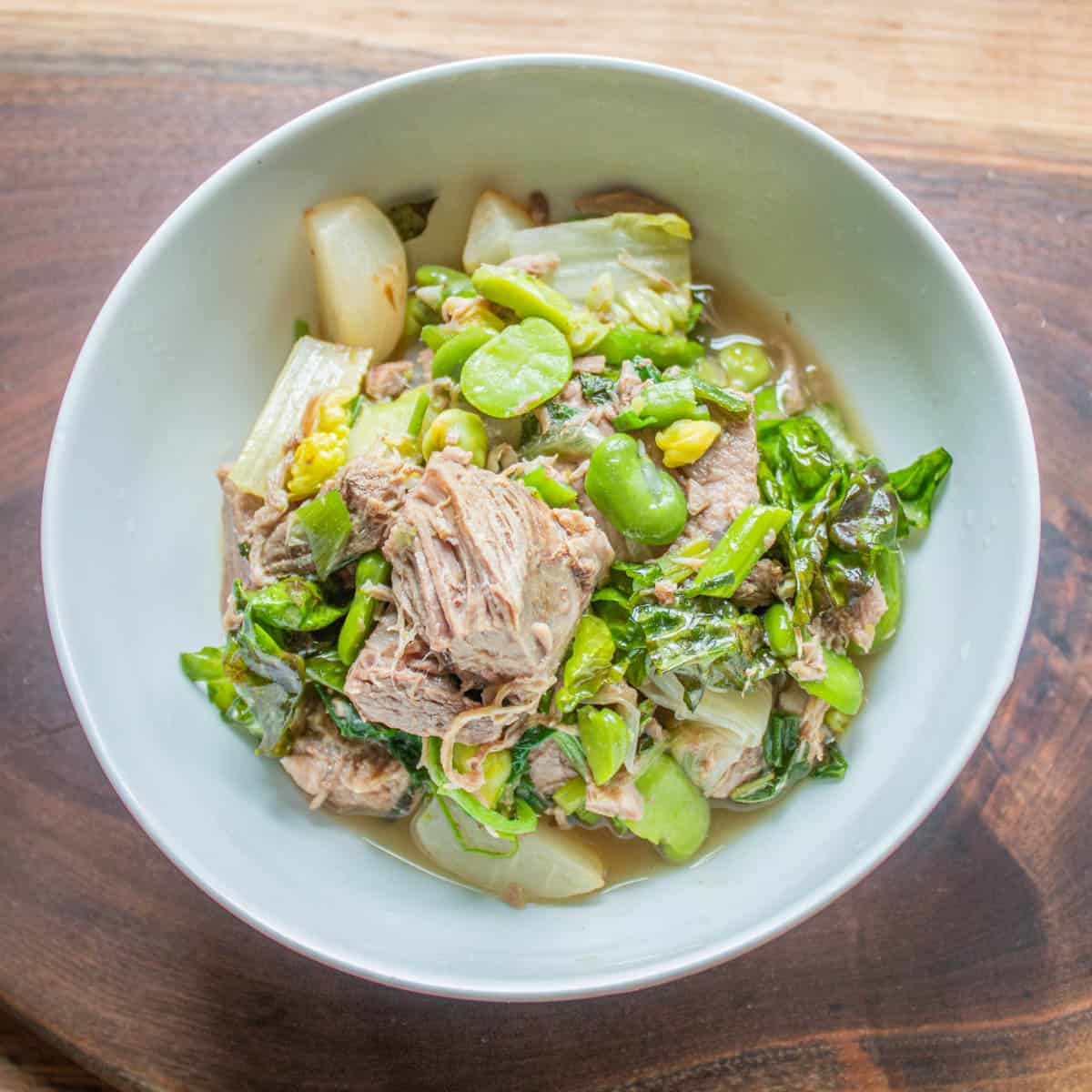
Recently someone gave me A Taste of Scotland. It's part of a series by Theodora Fitzgibbons.
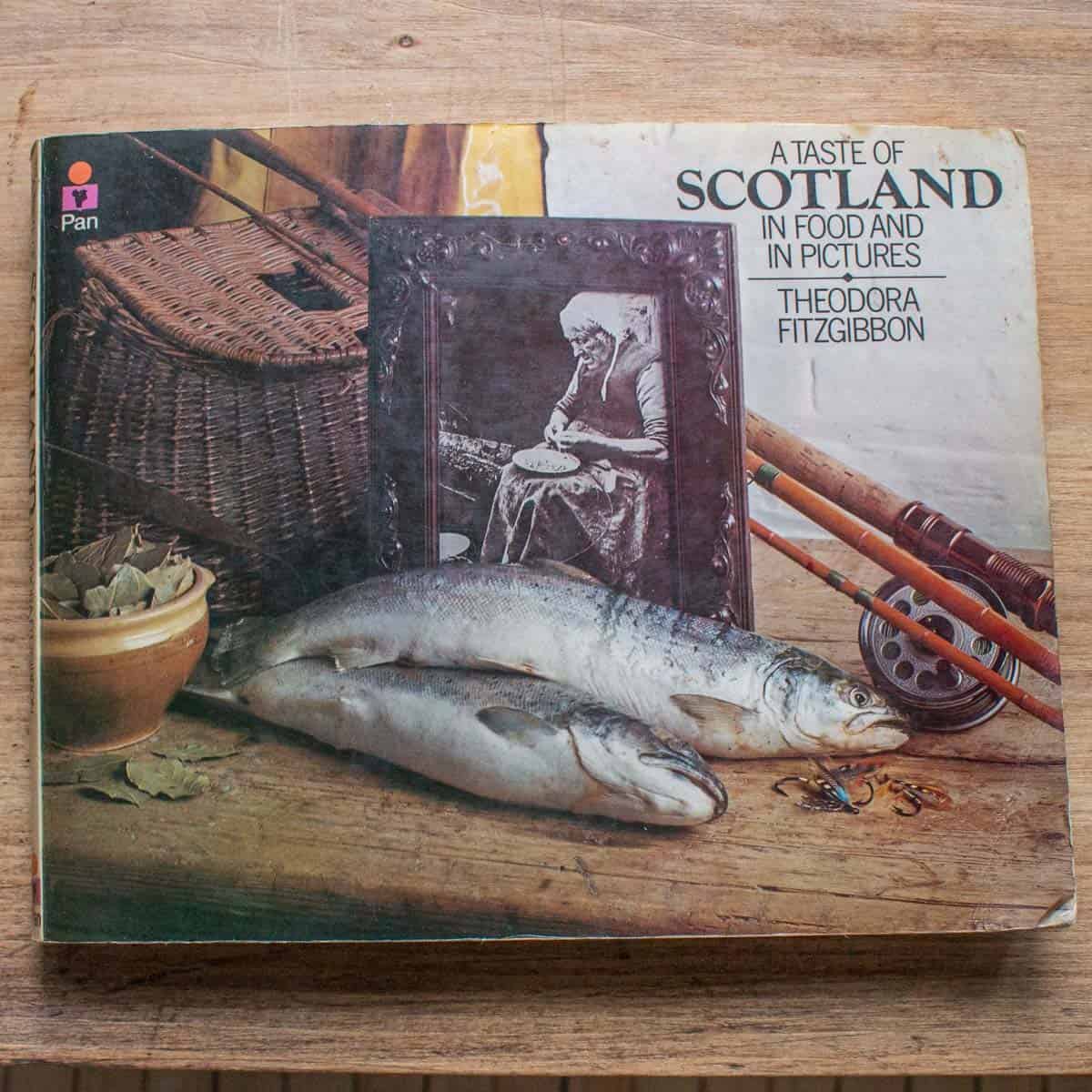
The book had a recipe for hotch potch soup that's a stew of mostly green vegetables and lamb. In the header, other ingredients are mentioned that were used in the past, or in times of famine.
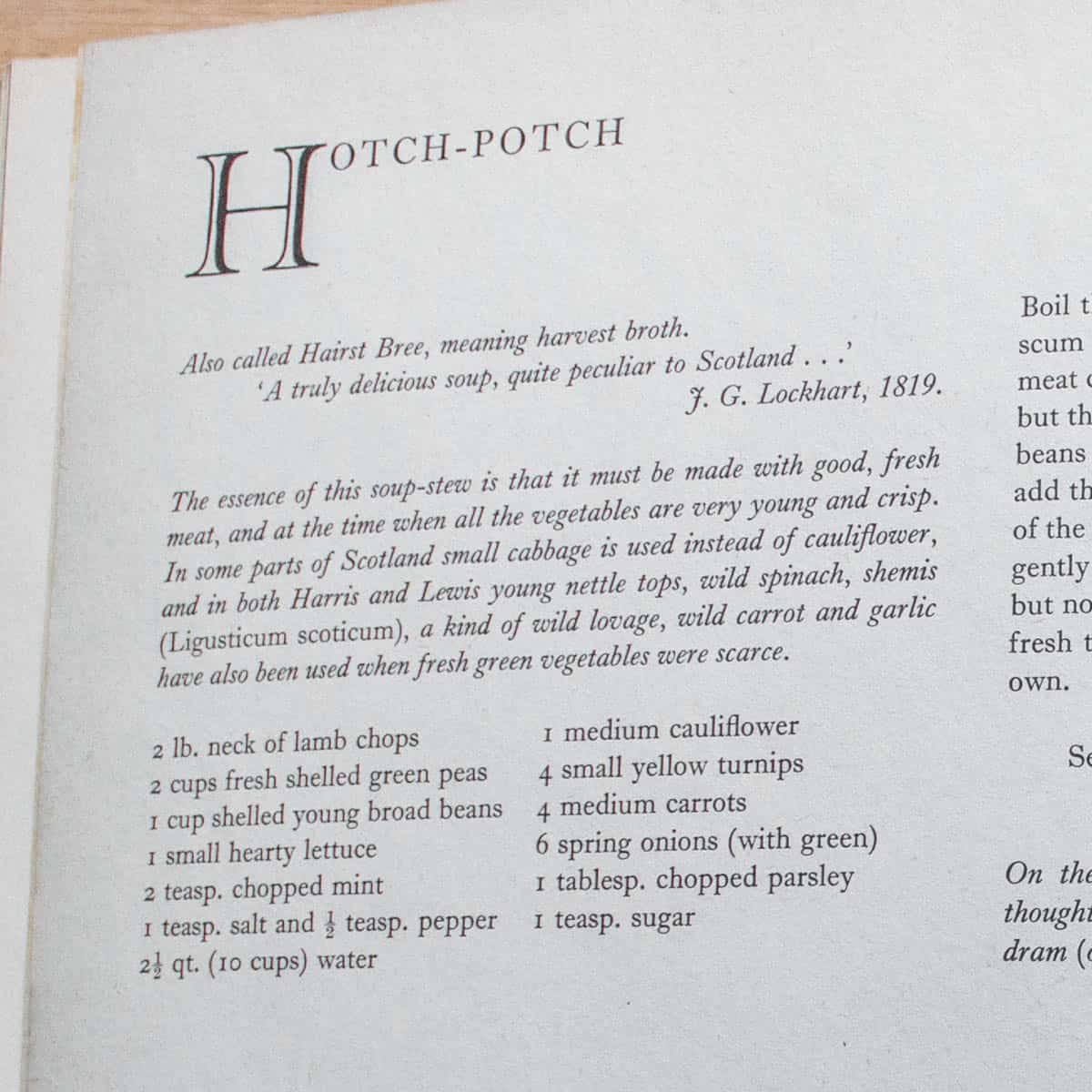
The author mentioned Levisticum scoticum, (Scotch lovage or shemis) wild onions, lamb's quarters and nettle tops.
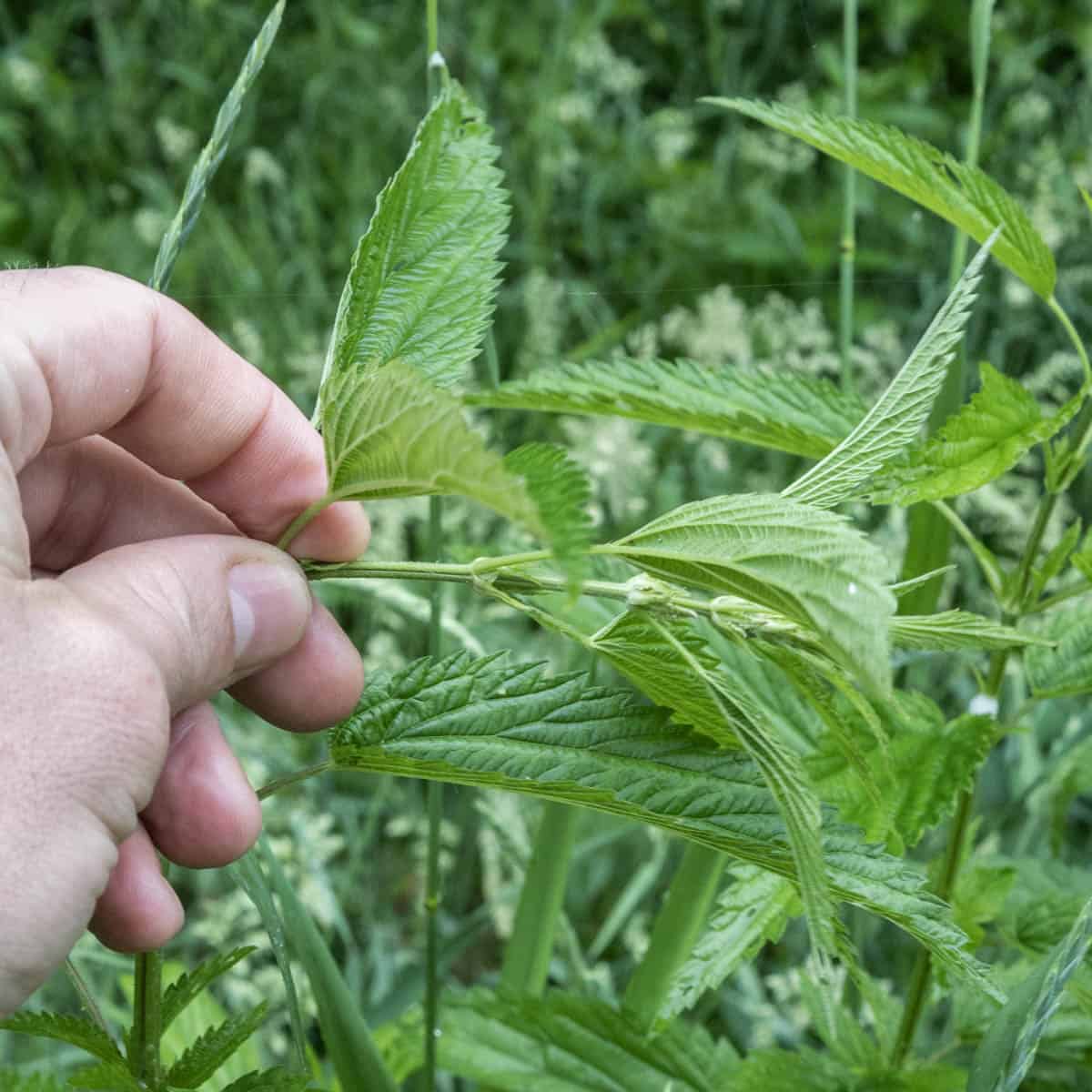
I thought the wild ingredients were good evidence of it being an old, authentic recipe.
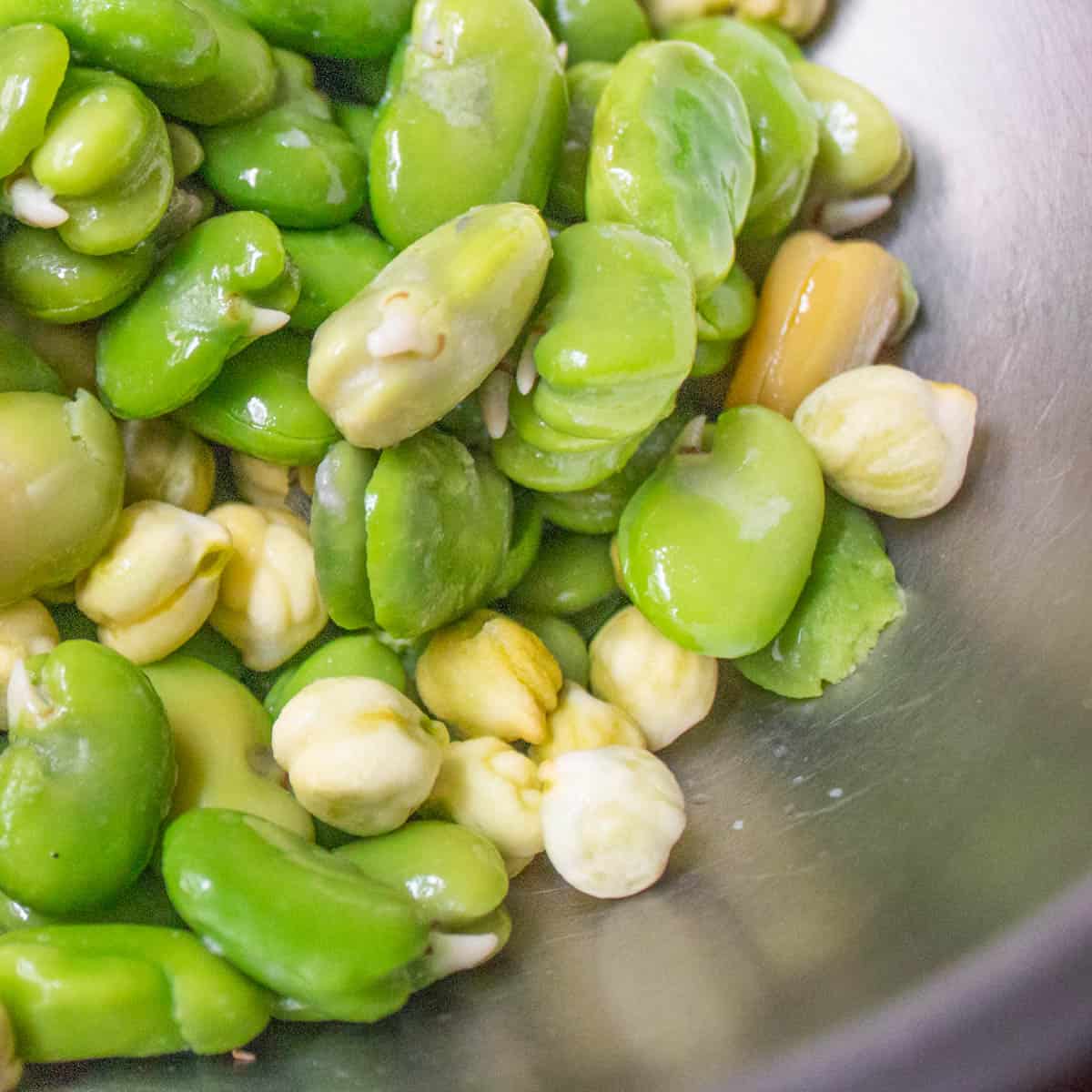
I researched the recipe and tried a few versions for a video series I've been working on for Shepherd Song Farm. The finished product should be wet, but not soupy. It's basically a bowl of vegetables and meat seasoned with broth.
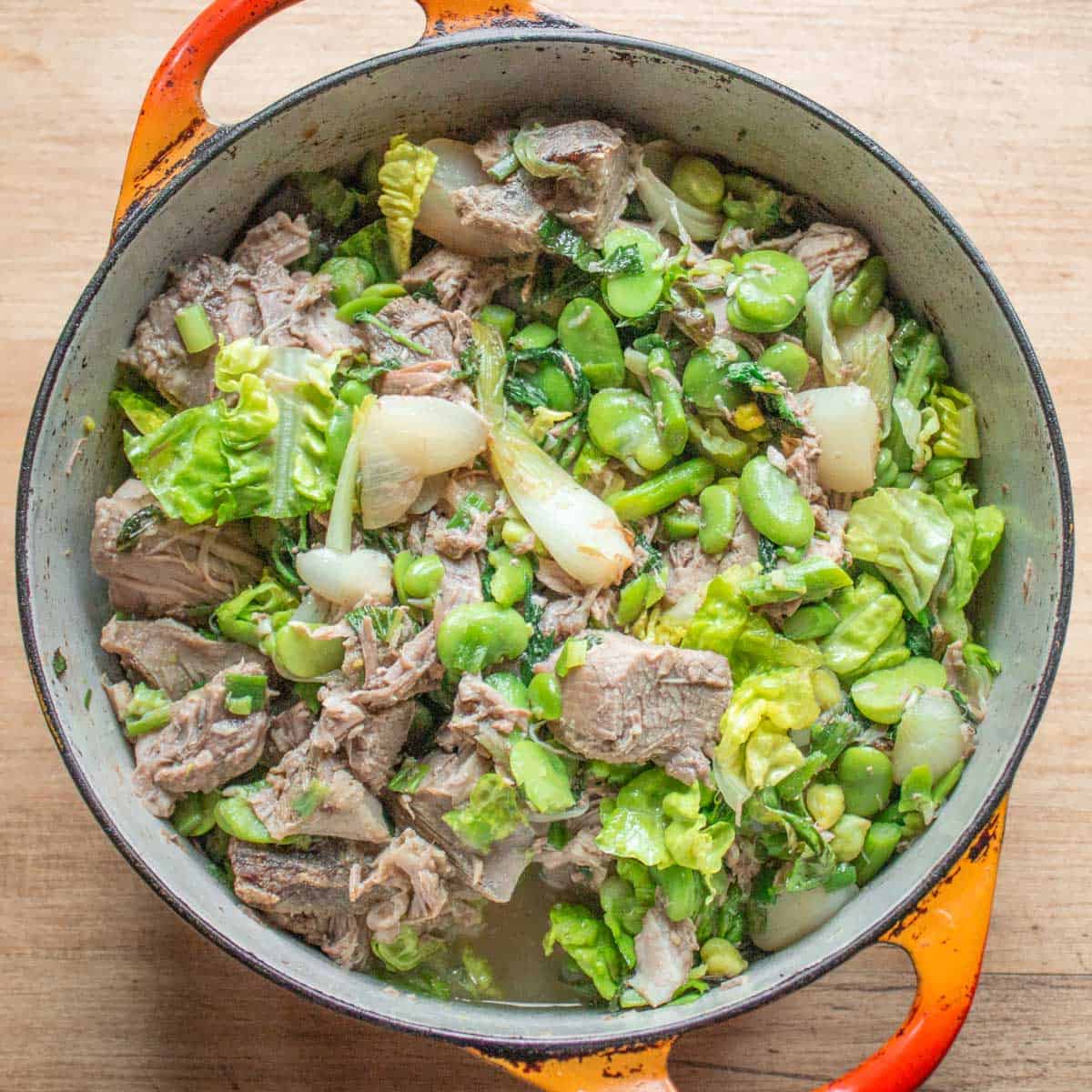
Hotch Potch
Equipment
- 1-2 gallon dutch oven or casserole
- 12 cast iron skillet or sauté pan with high sides
Ingredients
Lamb
- 1 lamb shoulder bone in, about 3.5 lbs
- 5 cups meat stock or water
- 3 teaspoons kosher salt
Stew
- 6 small radishes or baby turnips peeled
- 3 cups peas or mixed peas and fava beans
- 8-10 small spring onions or scallions
- 3 cups of loosely packed nettle tops or spinach
- 2 cups asparagus
- 1 small head of lettuce
- ¼ cup cooking oil
Serving
- extra virgin olive oil
- Fresh mint about 10 leaves
- Sliced chives
Instructions
Prepare the vegetables
- Cut the asparagus, scallions and lettuce into 1 inch pieces. Quarter the radishes.
Lamb
- Preheat the oven to 325.
- Season the lamb with the salt and allow to rest for an hour. Put the lamb shoulder in a dutch oven, cover with cold water, add a bay leaf. Top with a lid and cook for 2.5 hours or until fork tender. Cool for an hour and refrigerate until the fat has risen to the surface of the pot and the lamb is stiff.
- Remove the fat from the pot and discard. Transfer the lamb to a cutting board and pat dry. Carefully remove the fat cap and then the bone with a paring knife. Cut the lamb into 1 inch pieces and reserve separately from the liquid.
Stew
- In a large sauté or cast iron pan, heat the oil, then add the spring onions and radishes and sweat until tender.
- Add the radishes, spring onions, nettles and stock. Cook covered, stirring occasionally about 10 to 20 minutes or until the vegetables are tender and taste good to you. Add the peas, lamb, and lettuce and heat through.
- Finally, add mint to the pot and stir. Taste for salt and pepper and adjust if needed. Spoon the stock over each portion and finishing with a sprinkle of chives and a drizzle of olive oil.
- The stew should be very thick, with only a about ¼ cup of lamb jus per bowl.

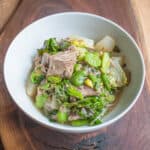
Locke Mackenzie
Easy to make and very delicious
Alan Bergo
Thanks Locke.
Tim Maguire
As a Scot who loves to cook, I too have a copy of this book although to be honest, I haven't looked at it in years. Your post makes me want to dig it out and have another peek. Oddly enough I've got both Scotch lovage and conventional lovage growing in my garden, and I use it in lots of ways: along with French sorrel, it makes a great 'first soup of spring' it's an intriguing addition to slow cooked stews of all kinds, and I use its thick stems to make straws for our Bloody Marys too. Your blog is fascinating and I appreciate how you share your ideas and enthusiasm very much.
Jacquie
BTW love your website. Only just discovered it this past winter. I too have have an appreciation for historical food and recipes, wild harvesting and frugality, and love of simple foods well prepared.
Hotch Potch is indeed a perfect recipe for March 17 even if not truly Irish. Here (in central Ohio), I have access to a very good local supply of fresh lamb -- the kind where you know the farmer. Yes we know the farmer. And nettles are one of my go-to "weed vegetables". I use nettles in nearly all recipes that call for cooked spinach.
On a separate note, I'd be curious what you may find if researching Horta Pie (an old fashion Greek recipe).
Jacquie
Alan Bergo
Thanks Jacquie. Horta is something I know well. My girlfriends family is half greek, and her father 100%. I met him late in his life, but when he would take walks, he would point at various plants and say, regarding various species: "We call that horta, you can eat that". I love how different cultures have catch-all terms for different edible plants.
Ellen
Oh man I am SOOO making this. I'm thinking jchokes, knotweed, field garlic, wild greens (I think I have some nettles left in the freezer). I've never cooked a lamb shoulder before and I can't wait to give it a try!
Alan Bergo
Don't have to use lamb shoulder, you could use any braising cut or stew meat. Side note, do you find nettles extra fibrous raw after freezing?